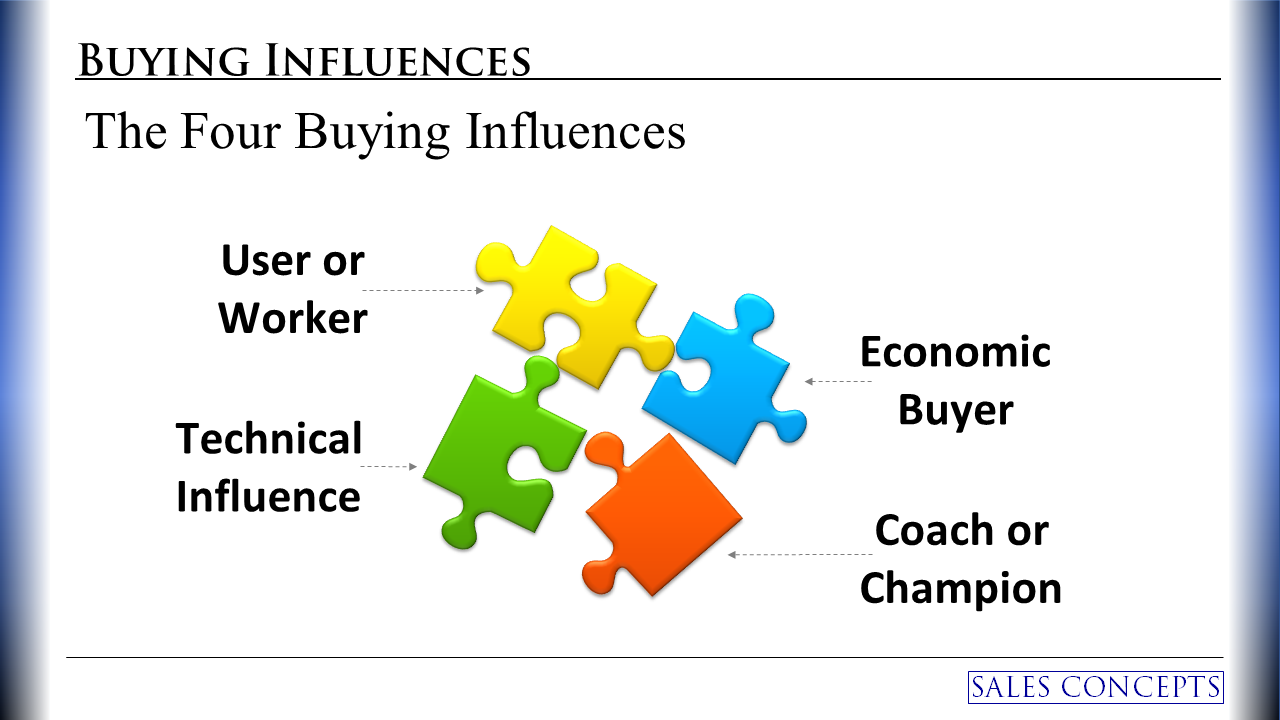De-Risking the Deal
Identify and Overcome Perceived Risk Across Buying Influences
Identify and Overcome Perceived Risk Across Buying Influences
In complex B2B sales, especially those involving large capital equipment or high-stakes services, your prospects do not make decisions in a vacuum. Instead, their choices are shaped by a committee of buying influences, each with different priorities, pressures, and, most importantly, perceived risks.
Even when the numbers make sense and the return on investment is clear, perceived risk can stall or kill a deal. Why? Because people do not just buy logically, they buy emotionally and then defend their decision logically. Risk triggers fear, and fear stalls progress.
Great sales professionals don’t just pitch value. They address risk and alleviate the fear associated with the buying decision.
Here’s how you can determine and overcome perceived risks across the four common buying influences: the Economic Buyer, the User, the Technical Influence, and the Coach (or Champion, Internal Advocate).
1. The Economic Buyer: Fear of financial or political fallout
Perceived Risks:
Will this pay off financially?
Will it affect my budget, bonus, or political capital if it fails?
Could this decision embarrass me or damage my reputation?Your Job: Quantify value, provide credible proof, and reduce exposure.De-Risking Questions:
What kind of return or payback period would make this feel like a smart investment for you?
If we could structure this to tie payments to performance or milestones, would that make it easier to move forward?
What metrics do you personally get evaluated on? Can we align our solution to help move those?
2. The User: Fear of disruption or complexity
Perceived Risks:
Will this change the way I work?
Will it be hard to learn or implement?
Will it make me look bad if it fails?Your Job: Make the transition feel safe, and show that support and training are built in.De-Risking Questions:What would a smooth rollout look like from your point of view?
Who on your team might feel overwhelmed or resistant? How can we help bring them along?
Have you been through implementations before that went wrong? What did that look like?
3. The Technical Influence: Fear of integration or compliance issues
Perceived Risks:Will this integrate with our existing systems?
Is this vendor credible and secure?
Will this violate IT, legal, or compliance standards?
Your Job: Speak their language, provide technical validation, and offer transparency.De-Risking Questions:What are the biggest red flags you look for in evaluating vendors like us?
Do you have an internal checklist or approval process we should align with?
Would a demo or a limited trial help your team feel more confident and secure?
4. The Coach: Fear of wasted political capital
Perceived Risks:If I champion this and it fails, what happens to me
Will you make me look good or hang me out to dry
Do I trust that you’ll keep your promises
Your Job: Equip, protect, and elevate your internal champion.De-Risking Questions:How can we make sure you look like the hero in this process?
What kind of support would you need from us, both before and after the sale?
Who do you think might challenge this? Can we help you prepare to address that?
Final Thought: Risk isn’t a deal killer, but silence is.
The biggest mistake a salesperson can make is assuming a buying influence is not afraid just because they do not speak up. People rarely voice their true concerns in meetings unless directly invited to do so.
Asking intelligent, risk-aware questions not only builds trust but also exposes hidden objections before they become deal-breakers.
Pro Tip: At your next meeting, try asking:What is the worst-case scenario that is in the back of your mind about moving forward with us? or What concerns do you have at this point?
Then stop talking!
Listen.
When you help each buying influence feel safe, supported, and in control, you do not just sell your product, you create a consensus. And in complex sales, that is the real win.

